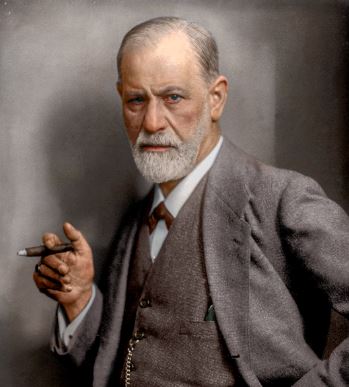The fact that only one session can be enough to solve even important psychological problems is an old thing, in reality: it has been known for a long time.
When Moshe Talmon (1990) realized that a large number of patients, who he thought were dropouts, had actually stopped coming to therapy because that one session was enough for him, one of the first things he did was, rightly, to study the bibliography.
Surprise: many already spoke about therapies lasting only one session.
In fact, in addition to the now usual single session therapy, today as then there are other terms in the literature such as one-time therapy, short-term therapy or ultra-brief therapy, to indicate therapies of very few sessions, often only one.
The Paradox of Paradoxes: Single Session Psychoanalysis
Guess who was the first to talk about one-time therapy? Sigmund Freud, the father of psychoanalysis, has always been considered a long (if not very long) term form of therapy.
As Talmon reports, during his holidays in the Austrian Alps in a single session Freud treated a patient named Katharina (Freud & Breuer, 1893). And later he told of having cured the impotence of composer Gustav Mahler during a single, long walk in the woods (Freud, 1980).
But Freud was not the only psychoanalyst, who cured patients in a single session. Depressed, hypochondriacs, panicists and others were treated in a single session by psychoanalysts who “dared” a little more than was allowed by the rigid psychoanalytic orthodoxy of the time (Alexander & French, 1946; Grotjahn, 1946; Saul, 1951) .
Indeed, between 1962 and 1966, at the prestigious Tavistock Clinic in London (stronghold of psychoanalysis), David Malan and his group treated 45 patients with different symptoms in a single session: depression, anxiety, impotence, frigidity and more. 51% of them were considered to have improved from the symptomatological point of view, and 24% also from the psychodynamic point of view. Furthermore, the results were maintained in the follow-ups from 2 to 9 years (Malan et al., 1968, 1975).
Similar studies were an internal revolution in psychoanalysis, so much so that Seymour Sarason (1988, p. 320), speaking of similar results (and in particular referring to the book by Alexander and French, which reported some of them) said that this “was disconcerting for the community analysts, professionals and theorists, as if the Pope had announced his conversion to Islam or his consent to abortion. “
Alexander and French’s book, which focuses on aspects that could shorten the duration of psychotherapy rather than single-session therapies, “soon became a taboo book in this community” (ibidem). And it is still with the taboos that we risk clashing today.
Single Session Therapy Today
All this makes us understand one thing: Single Session Therapy has its origins in the beginnings of psychotherapy. In fact, from the very beginning, numerous cases of therapies from a single session were described (here we have mentioned a small part of them) and in a short time there were many who questioned themselves about this phenomenon. The merit of Hoyt, Rosenbaum and Talmon was that of starting from these already solid foundations to conduct, now already thirty years ago, the first systematic and voluntarily focused studies on the subject, which outlined and expanded our knowledge.
Today TSS is adopted by various professionals and psychotherapists of different theoretical orientations (as I also explain in the free EBook on Single Session Therapy). Starting from the studies of Hoyt, Rosenbaum and Talmon (1990), the successes obtained in a single session have been cleared from the sphere of “fortuitous events” and it has been possible to start studying them systematically and studying how to get the most out of each individual meeting. The initial results were confirmed and improved, and today Single Session Therapy is a widespread reality as well as a necessity capable of responding to the needs of the modern world.
In fact, the clinical practice of TSS is used all over the world, with activities and research from various countries: United States, Canada, Australia, England, Norway, Mexico, China … just to name a few, and from today we can also say Italy.
Flavio Cannistrà
Psychologist, Psychotherapist
Founder of the Italian Center
for Single Session Therapy
Bibliographical references
Alexander, F. & French, T.M. (1946). Psychoanalytic Therapy: Principles and Application. New York: Ronald Press.
Freud, S. (1980). Opere, vol. 12. Torino: Bollati Boringhieri.
Freud, S. & Breuer, J. (1893). Casi clinici. In S. Freud, Opere, vol. 1. Torino: Bollati Boringhieri, 1975.
Grotjahn, M. (1946). Case C. In F. Alexander & T.M. French, op. cit.
Hoyt, M.F., Talmon, M. & Rosenbaum, R. (1990). Sixty attemps for planned single session therapy, manoscritto non pubblicato.
Malan, D. H., Bacal, H. A., Heath, E. S. & Balfour, F. H. (1968). Psychodynamic changes in untreated neurotic patients, I. In British Journal of Psychiatry, 114(510), 525 -551.
Malan, D. H. Heath, E. S., Bacal, H. A. & Balfour, F. H. (1975). Psychodynamic changes in untreated neurotic patients, II: Apparently genuine improvements. In Archives of General Psychiatry, 32(1), 110-126. doi:10.1001/archpsyc.1975.01760190112013
Sarason, S.B. (1988). The making of an American psychologist: an autobiography. San Francisco: Jossey-Bass.
Saul, L.J. (1951). On the value of one or two interviews. In Psychoanalytic Quarterly, vol. 20(4), 613-15.
Talmon, M. (1990). Single Session Therapy. San Francisco: Jossey-Bass (Tr. it. Psicoterapia a seduta singola. Milano: Erickson).
